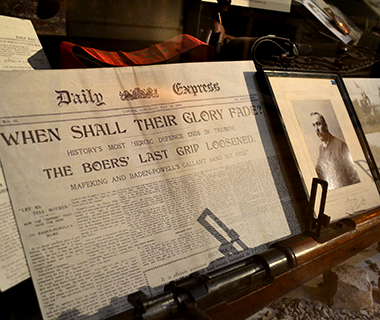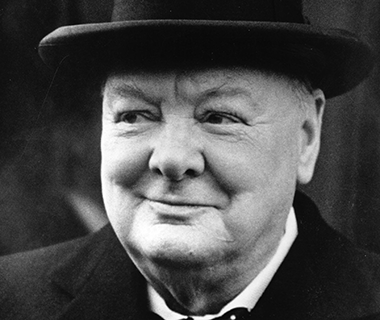Timeline - 1700s
SIEGE OF GILBRALTAR
1703
The 2nd Battatlion, The 73rd Highlanders were raised in 1778 and sailed from England in 1779 on route to Gibraltar, pausing to take part in the Battle Cape St. Vincent (1780) as part of a marine force. The Battalion landed in Gibraltar, where they remained throughout the Siege of Gibraltar 1780-83 repelling many French and Spanish attacks.
Read More
BATTLE OF BLENHEIM
1704
Battle of Blenheim, Germany. Turning the tide in the Spanish War of Succession the Marlborough’s Own 21st Foot helped defeat the invincible French army, kept Holy Roman Emperor Leopold on his throne and threw Bavaria out of the war.
Read More
WAR OF THE SPANISH SUCCESSION
1702-12
21st served under Marlborough in the Low Countries.Granted the prefix ‘Royal’, the White Horse of Hanover and became known as ‘Marlborough’s Own’. Took part in the battles of Blenheim (1704), Ramillies (1706), Oudenarde (1708), Malplaquet (1709), Bouchain (1711) and many others, being in the field throughout the whole campaign.Returned to Scotland in 1715.
THE ‘FIFTEEN
1715-16
21st at the Battle of Sheriffmuir. Afterwards quartered in Scotland,Ireland and England until 1741.
WAR OF THE AUSTRIAN SUCCESSION
1742-45
21st returned to the Netherlands and took a distinguished part in the battles of Dettingen (1743) and Fontenoy (1745).
THE ‘FORTY-FIVE
1746
Recalled from the Netherlands the 21st fought at Drumossie Moor (Culloden).
RETURN TO THE NETHERLANDS
1747-48
21st in action at Lauffeld (1747). This was followed by the Peace of Aix-la-Chapelle.
21st QUARTERED IN ENGLAND – 1748-50 and 1760
GARRISON DUTIES GIBRALTAR – 1750-59
1751
Regimental numbering introduced by Royal Warrant.
THE SEVEN YEARS WAR
1761
21st at assault landing and capture of Belleisle, Bay of Biscay.
GARRISON DUTY
1762-75
The 21st served in Scotland (1762-64), Florida (1765-69), Canada (1770-71) and England (1772-75).
RAISING OF THE 71st
1777
The 71st Highland Regiment of Foot (Light Infantry) was raised by Major-General John Mackenzie, Lord MacLeod, in 1777 from an independent company that had existed since 1771. The Regiment was numbered as The 73rd Foot and were not renumbered as The 71st until 1786. The 73rd Highlanders mustered in Elgin early in 1778 and moved to Fort George – this was the first Clan regiment to be raised and they proudly wore kilt and plaid of Mackenzie tartan. The Mackenzie tartan was maintained in the trews of The Royal Highland Fusiliers.
Read More
THE AMERICAN REVOLUTION
1775-80
21st embarked for relief of Quebec (1776). Took part in battles of Stillwater (1777) and Saratoga (1777). After Saratoga, was reformed and stationed in Scotland and Ireland 1780-88.
CAPE ST VINCENT, GIBRALTAR
1780-83
2/73rd raised in 1778, sailed from England in 1779, took part as marines in the battle of Cape St. Vincent (1780) and landed in Gibraltar where they remained throughout the Siege of Gibraltar 1780-83 repelling many French and Spanish attacks. Granted the insignia of the Castle and Key on the Colours. Returned to Scotland and disbanded 1783.
THE CARNATIC (FIRST MYSORE CAMPAIGN)
1779-84
1/73rd landed at Madras in January 1780 and took part in battles of Conjeveram, Porto Novo, Sholinghur, Cuddalore and many more.
1784-90
The Regiment remained in Southern India on garrison duty until 1790 when the second Mysore campaign began. It became the 71st in 1786.
RAISING OF THE 74th
Sir Archibald Campbell of Inverneill raised the 74th Highlanders in 1787 as one of the regiments raised to counter a threat in India – it was a Campbell regiment raised in Argyll with its headquarters in Glasgow. The Regiment soon left Scotland for India and, along with The 71st Highlanders, fought with distinction in the Second Mysore campaign, in particular at the capture of Bangalore (1791) and the siege, assault and capture of Seringapatam (1791-2).
Read More
NORTH AMERICA – WEST INDIES – GREAT BRITAIN
1789-93
21st on garrison duties in Nova Scotia, North America and the West Indies.
1794
21st in action at captures of Martinique, Gaudaloupe and Fort Matilda.
1795-97
21st on garrison duties in West Indies. Greatly reduced by yellow fever 1795. Returned to Scotland 1797 and stationed in Scotland, Ireland and England (1797-1805). 2/21st raised 1804.
SECOND MYSORE CAMPAIGN
1790-92
In 1790 the war in India was resumed. 71st and 74th were in the same Brigade. Both took part in the capture of Bangalore (1791) and the first battles for the capture of Seringapatam (1791-92).
1792-98
Both Regiments remained based in India until 1798 when the 71st returned home, leaving the 74th. During this tour, the 71st took part in the invasion of Ceylon (1795-96).
CEYLON
1795-96
71st in action of Trincomalee, Ceylon. Afterwards returned to India until 1798 when it returned to UK and was quartered in England and Ireland.
1798-1805
THE THIRD MYSORE CAMPAIGN
1799-1801
74th in the advance, seige, assault and capture of Seringapatam (1799).
Opening times
We are open Tuesday - Friday 10:00 - 15:30. We are closed over Christmas and New Year.
Admission
Entry to the museum is FREE although donations are most welcome. If you are bringing a larger groups it's best to let us know in advance.





Get in Touch
- call us
0141 332 5639
- our address
518 Sauchiehall Street, Glasgow, G2 3LW, Scotland
